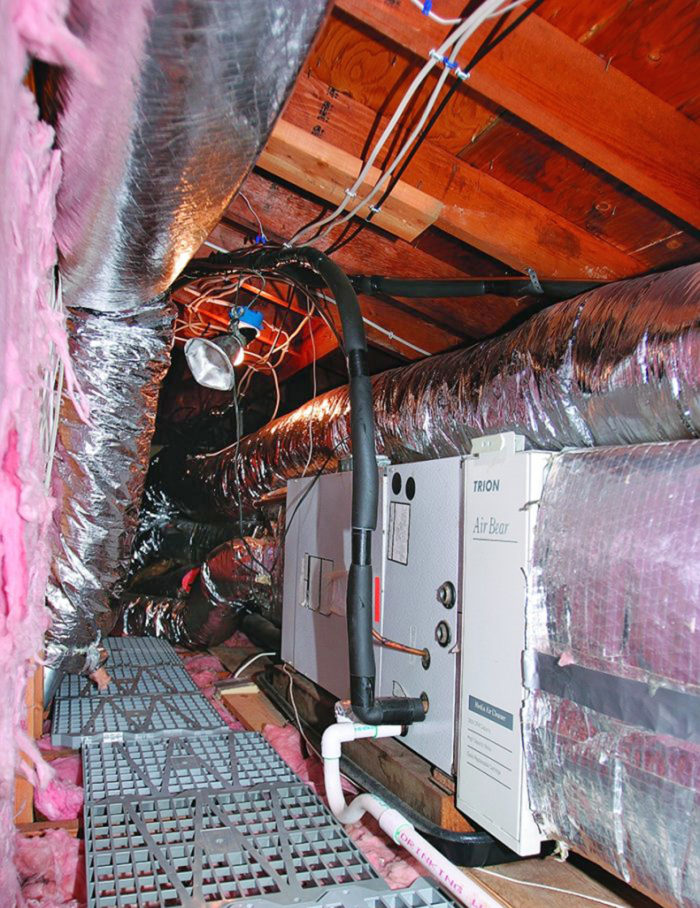
Image Credit: Image #1: Dan Morrison - Green Building Advisor
In many southern states, it’s common for an HVAC contractor to install an air handler and ductwork in a vented unconditioned attic. In July, the attic temperature rises to 120°F. Perhaps the homeowner, irritated by his hot bedroom and concerned about his high electricity bills, sticks his head through the attic access hatch, and nearly faints. It’s a sauna up there.
One solution to this problem is to convert the vented unconditioned attic to an unvented conditioned attic by applying spray foam to the underside of the roof sheathing. That’s a good solution, because it brings the attic air handler and attic ductwork into the home’s conditioned space, but the price tag is very high.
So the homeowner thinks of a different solution, and posts a question on GBA: Can I build a mechanical room with insulated walls in my attic, so that the air handler is (more or less) in conditioned space?
I usually advise, “That’s a bad idea.” Let’s investigate why.
The many features of a mechanical room
First of all, let’s describe the features of an adequate mechanical room. It needs to have an insulated floor, walls, and ceiling, and these assemblies need to be relatively airtight. The walls should be finished with 5/8-inch drywall. The room needs to be big enough to allow maintenance workers to access the equipment comfortably, and to swap failed equipment with new equipment when necessary.
Can you create this type of mechanical room in an attic? Sometimes, but not always. What are the hurdles?
Weekly Newsletter
Get building science and energy efficiency advice, plus special offers, in your inbox.

This article is only available to GBA Prime Members
Sign up for a free trial and get instant access to this article as well as GBA’s complete library of premium articles and construction details.
Start Free TrialAlready a member? Log in





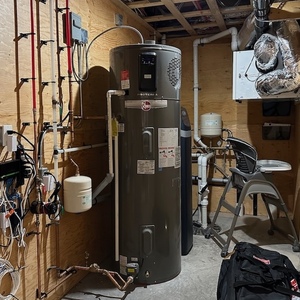
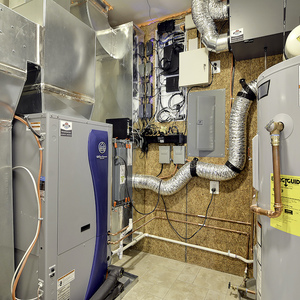
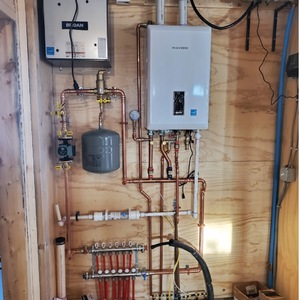
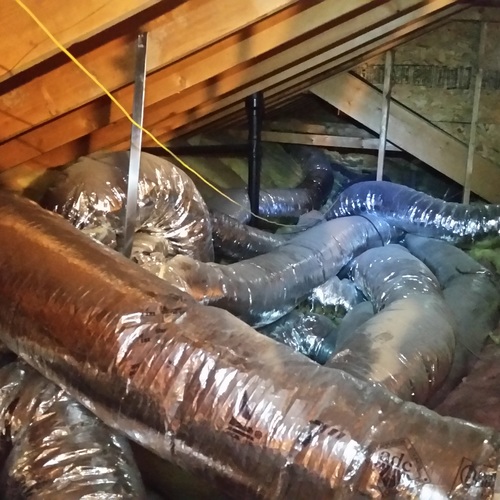






7 Comments
Thanks for that perspective.
Thanks for that perspective. Having recently encapsulated my attic and upgraded the A/C in place, I'm glad I considered a range of options, including mini-splits. These upgrades are too expensive to change my mind about later. Had my goals and constraints have been a bit different, I would have been happy to ditch the duct work and conventional air handler.
Response to Jeremy Good
Jeremy,
I'm glad you went forward with your work only after a full evaluation of all of your options. Many homeowners don't even consider the idea of abandoning their attic air handler and attic ducts.
You're right, of course, that for some homeowners, retaining the existing ducts (and paying to convert the attic into an unvented conditioned attic) makes sense. There are lots of variables. Whatever the final decision, it's important to make the decision with open eyes, and with all options on the table.
The mini split solution
I actually abandoned my ducted central air unit for reasons including safety and efficiency. However not long after I started having moisture issues showing in rooms that had cheap 70s wood paneling. Apparently the leaky ducts were doing some funky pressurization/depressurization thing in our house before.
I would suggest from first hand experience that the building envelope as a whole would be a prudent place to look first for improvements along with Martin's suggestions.
Response to Russell Boudreau
Russell,
Without more details on your specific situation, it's hard to know what was going on in your house that caused the moisture issues.
But you are certainly correct that you need to apply whole-house thinking to any building issue. If a house is being accidentally pressurized or depressurized by an unbalanced forced-air heating and cooling system, any changes to that system can affect air flows through the building assembly (and can therefore result in increased or decreased condensation problems).
The knee bone is connected to the thigh bone, and the thigh bone is connected to the hip bone.
For more information on these issues, see "An Introduction to Pressure Diagnostics."
Anyone with an old house should consider blower-door-directed air sealing work, since tight envelopes are much less problematic than leaky envelopes. And if you suspect that your duct system is leaky or unbalanced, you should hire a home performance contractor to check the performance of your duct system.
What if the building was a single story with 10 1/4" SIPS roof?
The house I'm planning is less than 900 sq ft, so placing the mechanical in the attic would free up precious floor space.
Mike,
The advice about avoiding placing mechanicals in attics only applies to unconditioned ones. A more general injunction might be to: Keep all mechanical equipment and ducts within the conditioned building envelope.
Mike,
Malcolm is correct. You'll notice (if you read the first sentence of this article) that the article discusses "vented unconditioned attics." Presumably, if your house has a SIP roof, your attic will be an unvented conditioned attic -- so the attic is inside the conditioned space.
Putting a mechanical room in your type of attic is perfectly OK.
Log in or become a member to post a comment.
Sign up Log in